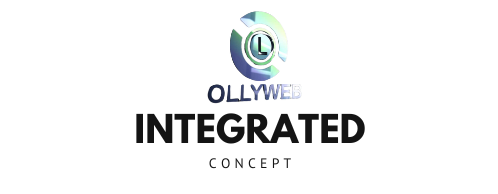How To Start Making Lots Of Money

Hey there, my money-hungry friend! Are you tired of scraping by and ready to start raking in the big bucks? Well, you've come to the right place because today we're going to dive into the exciting world of making lots of money. Now, I know what you're thinking – “Is this just another one of those boring articles with generic advice?” Absolutely not! We're going to keep things fresh and real, talking about the nitty-gritty details that will actually help you kickstart your journey to financial success. So, buckle up and get ready to learn some killer strategies that will have you swimming in cash in no time. Let's get this money-making party started!
Identifying profitable opportunities
Alright, let's dive into the world of identifying profitable opportunities! Now, when it comes to making money, it's all about finding those golden chances that can turn your pockets from empty to overflowing. So, how do we go about spotting these opportunities? Well, my friend, it's all about keeping your eyes peeled and your mind open.
First things first, you gotta stay informed. Stay up to date with the latest trends, news, and developments in the market. This could be anything from new technologies to emerging industries. By staying in the loop, you'll be able to spot potential gaps or niches that you can tap into. Remember, knowledge is power!
Next, it's time to do some good old-fashioned research. Dive deep into the market you're interested in and analyze the competition. Look for areas where you can offer something unique or better than what's already out there. It could be a new twist on an existing product or a completely fresh idea. The key is to find a gap in the market that you can fill with your own special sauce.
Lastly, don't be afraid to take risks. Sometimes, the most profitable opportunities are the ones that seem a little out of reach or unconventional. Don't be afraid to think outside the box and take a chance on something that others might overlook. Remember, fortune favors the bold!
So, my friend, keep your eyes open, do your research, and be willing to take a leap of faith. With these strategies in your back pocket, you'll be well on your way to identifying those profitable opportunities that can change your life. Good luck out there!
Developing a solid business plan
So, you want to develop a solid business plan, huh? Well, let me tell you, my friend, that's a smart move. Having a well-thought-out plan is like having a roadmap to success. It's like having a game plan before stepping onto the field. It's like having a recipe before you start cooking up a storm. You get the idea.
Now, let's dive into the nitty-gritty of developing a solid business plan. First things first, you need to have a clear vision of what you want to achieve. What's your big idea? What problem are you solving? Who are your target customers? These are the questions you need to answer before you even think about putting pen to paper.
Once you've got your vision locked down, it's time to do some serious research. You need to know your market inside and out. Who are your competitors? What are they doing right? What are they doing wrong? What trends are shaping the industry? This is where you gather all the juicy details that will help you position your business for success.
Now that you've done your research, it's time to start mapping out your plan. Break it down into bite-sized chunks, my friend. Set clear goals and objectives. Outline your strategies for marketing, operations, and finance. And don't forget to include a contingency plan for when things don't go according to plan (because trust me, they rarely do).
So, there you have it, my friend. Developing a solid business plan is all about having a clear vision, doing your research, and mapping out your strategies. It's like building a sturdy foundation for your business. And remember, a good plan is flexible, adaptable, and always open to change. So go ahead, put on your thinking cap, and start crafting that roadmap to success. You got this!
Building a strong personal brand
So, let's talk about building a strong personal brand. Now, I know what you're thinking, “What the heck is a personal brand?” Well, my friend, think of it as your own unique identity in the big, bad world of business and beyond. It's all about how you present yourself, both online and offline, and how you differentiate yourself from the crowd.
First things first, you gotta know who you are and what you stand for. Take some time to reflect on your values, passions, and strengths. What makes you tick? What sets you apart from everyone else? Once you've got a clear understanding of your personal brand, it's time to start building it up.
Now, let's talk about the online world. In this day and age, your online presence is everything. So, make sure you're putting your best foot forward on social media platforms, like Instagram, Twitter, and LinkedIn. Show off your expertise, share valuable content, and engage with your audience. And don't forget to be authentic! People can smell a fake from a mile away, so be true to yourself and let your personality shine through.
But it's not just about the online stuff. Building a strong personal brand also means making an impact in the real world. Attend networking events, conferences, and workshops in your industry. Connect with like-minded individuals and build relationships. And when you're out there, be confident and memorable. Dress the part, speak with conviction, and always deliver on your promises. Remember, your personal brand is all about how others perceive you, so make sure you leave a lasting impression.
So, there you have it, my friend. Building a strong personal brand is all about knowing who you are, showcasing your expertise online, and making a real-world impact. It's not an overnight process, but with time, effort, and a little bit of swagger, you'll be well on your way to building a personal brand that's as strong as steel.
Acquiring essential skills and knowledge
So, let's talk about acquiring essential skills and knowledge. You know, in this fast-paced world we live in, it's crucial to stay ahead of the game and constantly be learning new things. It's like that saying, “knowledge is power,” and boy, is that true! Whether it's learning how to code, mastering a new language, or even just brushing up on your math skills, acquiring essential skills and knowledge can open up a whole world of opportunities for you.
Now, when it comes to acquiring these skills and knowledge, there are a few things you need to keep in mind. First off, it's important to identify what exactly you want to learn. Are you interested in a specific field or subject? Do you have a particular goal in mind? Once you have a clear idea of what you want to learn, you can start seeking out resources and opportunities to acquire that knowledge.
Next, it's all about finding the right tools and resources to help you on your learning journey. Luckily, we live in a time where information is just a click away. You can find online courses, tutorials, and even forums where you can connect with others who are also learning the same thing. It's like having a whole community of people cheering you on and helping you along the way.
Lastly, and perhaps most importantly, it's all about putting in the time and effort to actually learn and practice these skills. You can have all the resources in the world, but if you don't put in the work, it's not going to get you very far. So, set aside dedicated time each day or week to focus on your learning. Make it a priority and stick to it. Trust me, the results will be worth it.
So, there you have it. Acquiring essential skills and knowledge is all about identifying what you want to learn, finding the right resources, and putting in the time and effort to actually learn and practice. It may not always be easy, but with determination and a little bit of hustle, you'll be well on your way to becoming a knowledge powerhouse.
Creating multiple streams of income
Creating multiple streams of income is a game-changer when it comes to financial stability and freedom. It's like having multiple safety nets to catch you if one falls through. Imagine having not just one, but several sources of income flowing into your bank account every month. It's like having a diversified investment portfolio, but instead of stocks and bonds, you have different income streams that can support you in various ways.
So, how can you create multiple streams of income? Well, there are several ways to go about it. One option is to start a side hustle or a small business alongside your regular job. This could be anything from freelancing, selling handmade products online, or offering a service that you're skilled at. By doing this, you're not only bringing in extra income, but you're also building a valuable skill set and expanding your network.
Another way to create multiple streams of income is through passive income sources. This is where you invest your money or time upfront and then reap the benefits over time. For example, you could invest in rental properties and earn passive income through rental payments. Or you could create and sell an online course or e-book that generates income even when you're not actively working on it. The key here is to find opportunities that align with your interests and skills, so it doesn't feel like a chore.
Lastly, diversifying your investments can also help create multiple streams of income. Instead of putting all your eggs in one basket, consider spreading your investments across different asset classes such as stocks, bonds, real estate, and even cryptocurrencies. This way, if one investment performs poorly, you have others that can potentially make up for it. It's important to do your research and seek professional advice when it comes to investing, as it can be a complex and risky endeavor.
In conclusion, creating multiple streams of income is a smart move for anyone looking to achieve financial stability and freedom. Whether it's starting a side hustle, generating passive income, or diversifying your investments, there are various ways to make it happen. Remember, it's not about working harder, but working smarter and leveraging your skills and resources to create additional income streams. So, why rely on just one source of income when you can have multiple streams flowing into your bank account?
Leveraging technology and automation
Let's talk about how we can make the most of technology and automation. I mean, come on, we're living in the 21st century, where everything seems to be automated and tech-driven. It's like we're in a sci-fi movie, but without the flying cars (yet). So, how can we leverage all this cool tech stuff to our advantage?
First off, let's talk about how technology can help us be more efficient. With the right tools and software, we can automate repetitive tasks that used to eat up our time and energy. Think about it, instead of spending hours manually inputting data or doing mundane calculations, we can let the machines do the heavy lifting while we focus on more important things. It's like having a personal assistant that never gets tired or makes mistakes (well, most of the time).
But it's not just about saving time and effort. Technology can also help us reach a wider audience and expand our business horizons. With the internet and social media, we can connect with people from all over the world, promote our products or services, and build a strong online presence. It's like having a virtual storefront that never closes, allowing us to attract customers even while we sleep. Plus, with the power of data analytics, we can gather insights about our target audience, their preferences, and behaviors, and tailor our marketing strategies accordingly. It's like having a crystal ball that tells us exactly what our customers want.
Now, let's talk about the step-by-step process of leveraging technology and automation. First, we need to identify the areas in our business where technology can make a difference. Is it in streamlining our operations, improving customer service, or enhancing our marketing efforts? Once we have a clear idea, we can start researching and exploring the available tools and software that can help us achieve our goals. It's like going on a shopping spree, but instead of clothes or gadgets, we're looking for the perfect tech solutions.
Next, we need to implement and integrate these technologies into our existing systems. This might involve training our employees, setting up new processes, or even redesigning our website or app. It's like building a puzzle, where each piece fits perfectly to create a seamless and efficient workflow. And of course, we need to constantly monitor and evaluate the results to ensure that our tech investments are paying off. It's like being a detective, always on the lookout for clues and evidence that our strategies are working.
So, there you have it. Leveraging technology and automation is all about using the power of machines and software to our advantage. It's about working smarter, not harder, and embracing the opportunities that the digital age has to offer. With the right tools and strategies, we can take our business to new heights and stay ahead of the game. So, let's embrace the future and make technology our best friend!
Implementing effective marketing strategies
So, let's talk about implementing effective marketing strategies, my friend. Now, when it comes to marketing, you gotta have a game plan, a strategy that's gonna make your brand shine like a diamond in a sea of competition. It's all about standing out, grabbing attention, and making people say, “Hey, I gotta check out what this company is all about!”
First things first, you gotta know your audience like the back of your hand. I'm talking about really understanding who your customers are, what they want, and how they think. You can't just throw spaghetti at the wall and hope something sticks, you know? You gotta do your research, dig deep, and figure out what makes your target market tick. Once you've got that down, you can tailor your marketing messages to speak directly to their needs and desires.
Next up, you gotta be where your audience is hanging out. I'm not just talking about physically, but also online. Are they scrolling through Instagram, tweeting up a storm, or maybe they're all about that TikTok life? You gotta be present on the platforms where your audience spends their time. And hey, don't just be a wallflower, get in on the conversation! Engage with your audience, reply to their comments, and show them that you're not just another faceless brand, but a real, relatable company that cares about their customers.
Lastly, my friend, you gotta be creative with your marketing. Think outside the box, push the boundaries, and dare to be different. Don't just follow the crowd, be a trendsetter. Whether it's through eye-catching visuals, witty copy, or interactive campaigns, find ways to make your brand memorable. People are bombarded with ads left and right, so you gotta find a way to cut through the noise and make a lasting impression. And hey, don't be afraid to take risks. Sometimes the biggest rewards come from stepping out of your comfort zone and trying something new.
So there you have it, my friend. Implementing effective marketing strategies is all about knowing your audience, being present where they are, and getting creative with your approach. Now go out there and make your brand shine like a supernova!
Cultivating a strong network of contacts
So, let's talk about cultivating a strong network of contacts. Now, I know what you're thinking – “networking, ugh, that sounds so corporate and boring.” But hear me out, because building a solid network can actually be pretty damn cool and beneficial. Think of it as creating a tribe of like-minded individuals who have your back and can help you out when you need it.
First things first, you gotta put yourself out there. Attend events, conferences, and meetups where you can meet people who share your interests and passions. Don't be afraid to strike up conversations and make connections. Remember, it's not just about collecting business cards or LinkedIn connections, it's about building genuine relationships. So, be authentic, show interest in others, and be a good listener. People appreciate that shit.
Once you've made some connections, it's important to nurture those relationships. Keep in touch with your contacts regularly, whether it's through emails, phone calls, or grabbing a coffee. Show them that you value their friendship and support. And hey, don't just reach out when you need something. Be there for them too, offer your help and expertise whenever you can. It's all about give and take, my friend.
Now, here's the real secret sauce to cultivating a strong network – be a connector. Introduce people to each other who you think could benefit from knowing each other. It's like playing matchmaker, but for professional relationships. Trust me, when you become known as the person who can connect others, your network will grow exponentially. Plus, it feels pretty damn good to help others succeed.
So, there you have it – cultivating a strong network of contacts is all about putting yourself out there, nurturing relationships, and being a connector. It may take some time and effort, but the rewards are totally worth it. So go on, get out there and start building your tribe. You never know who you might meet and how they could change your life.
Managing finances and investments wisely
So, let's talk about managing finances and investments wisely. Now, I know this might not be the most exciting topic for some people, but trust me, it's super important. Think of it like this: you wouldn't go on a road trip without a map or GPS, right? Well, managing your finances is like having a roadmap for your money. It helps you stay on track and make smart decisions about how to spend, save, and invest your hard-earned cash.
First things first, you gotta have a budget. I know, I know, budgeting sounds boring and restrictive, but it's actually liberating. It gives you a clear picture of where your money is going and helps you prioritize your spending. Plus, it's not about cutting out all the fun stuff, it's about finding a balance between your needs and wants. So, sit down and take a good look at your income and expenses. Figure out how much you can afford to spend on essentials like rent, bills, and groceries, and then allocate some money for savings and investments. Trust me, having a budget will make you feel like a financial ninja.
Now, let's talk about investments. Investing can be a bit intimidating, especially if you're new to the game. But don't worry, you don't need to be a Wall Street guru to make smart investment decisions. Start by educating yourself about different investment options, like stocks, bonds, mutual funds, and real estate. Understand the risks and potential returns associated with each option. Then, set some financial goals. Do you want to save for retirement, buy a house, or maybe take that dream vacation? Knowing your goals will help you choose the right investment strategy. And remember, diversification is key. Don't put all your eggs in one basket. Spread your investments across different asset classes to minimize risk. And hey, if you're not sure where to start, consider consulting a financial advisor. They can help you navigate the world of investments and make informed decisions.
So, there you have it. Managing finances and investments wisely is all about having a roadmap for your money, creating a budget, and making smart investment choices. It might not be the most thrilling topic, but trust me, it's worth the effort. So, take control of your finances, set some goals, and watch your money grow. You got this!
Continuously learning and adapting to market trends
So, let's talk about this subheading: continuously learning and adapting to market trends. Now, in this fast-paced world we live in, it's crucial for businesses to stay on top of the game. And one way to do that is by continuously learning and adapting to market trends. You see, the market is like a wild beast, always changing, always evolving. And if you want to survive and thrive, you gotta keep up with it.
Now, when we say “continuously learning,” we're not just talking about reading a few articles here and there. No, no, my friend. We're talking about diving deep into the ocean of knowledge, exploring every nook and cranny, and staying up-to-date with the latest trends, technologies, and consumer behaviors. It's like being a detective, always on the lookout for clues and insights that can help you make better decisions for your business.
But it doesn't stop there. Oh no, my friend. Adapting to market trends is like being a chameleon. You gotta be able to change your colors and blend in with the environment. If the market shifts towards a new trend, you gotta be ready to pivot, to adjust your strategies and offerings accordingly. It's all about being flexible and agile, like a ninja on a mission. And trust me, when you can adapt to market trends, you'll be one step ahead of your competitors, and that's a pretty sweet spot to be in.
So, how do you continuously learn and adapt to market trends? Well, it starts with having a curious mind and a hunger for knowledge. You gotta be open to new ideas, willing to explore uncharted territories, and never settle for the status quo. Surround yourself with industry experts, attend conferences and workshops, and keep an eye on what your competitors are doing. And most importantly, listen to your customers. They are the ones who will give you the most valuable insights into what's hot and what's not. So, my friend, embrace the ever-changing nature of the market, and let it guide you towards success.
Another post you might find useful is, How Long Does It Take To Start Making Money From A Blog.
I've also written about How To Start Making Money From Social Media, so feel free to check that out, or bookmark it for later!






